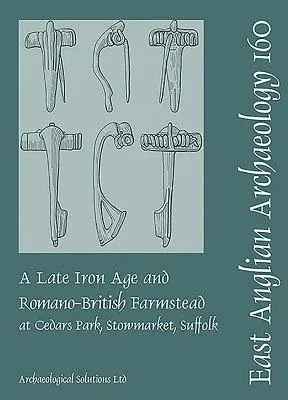Excavations at Cedars Park revealed a late Iron Age farmstead that
remained occupied until the mid-4th century AD. The late Iron Age
settlement comprised two ditched enclosures with associated roundhouses
and other features. Four post structures probably for the storage of
plant based foodstuffs were located well away from the settlement
enclosures.
In the early Romano-British period, the northern enclosure was converted
to agricultural use; a system of parallel linear gullies, likely to have
been associated with arable farming or horticulture, was laid out here
and also across the upper slopes of large parts of the adjacent
hillside. In the southern enclosure, new buildings were put up
(roundhouses and a rectangular post-built structure) and the enclosure
ditches were re-dug.
By the mid-3nd century the southern enclosure had been surrounded on
three sides by a system of ditched small enclosures and paddocks. Three
buildings (a three-roomed domestic building and two bathhouses) were
constructed partly in stone, along with rectangular timber buildings
(posts and sill beam construction) and two new roundhouses. Droveways
and a stock-handling area were established in the eastern part of the
site.
The farmstead's principal buildings fell into decay or were demolished
in the late 3rd or early 4th century. However, despite the absence of
recognizable new structures, the site continued to be occupied. Later
Roman activity was represented mainly by finds-rich occupation layers
which had only survived truncation from modern agricultural activity
where they lay in natural depressions or in the tops of earlier
features. Pottery and coins indicate that the site continued to be
occupied until around the middle of the 4th century. The site thus fits
in with the picture emerging from other late Roman rural sites in East
Anglia, where cut features are rare but continuing occupation is
nevertheless represented by surface spreads of dark earth containing
3rd- and 4th-century cultural material.

